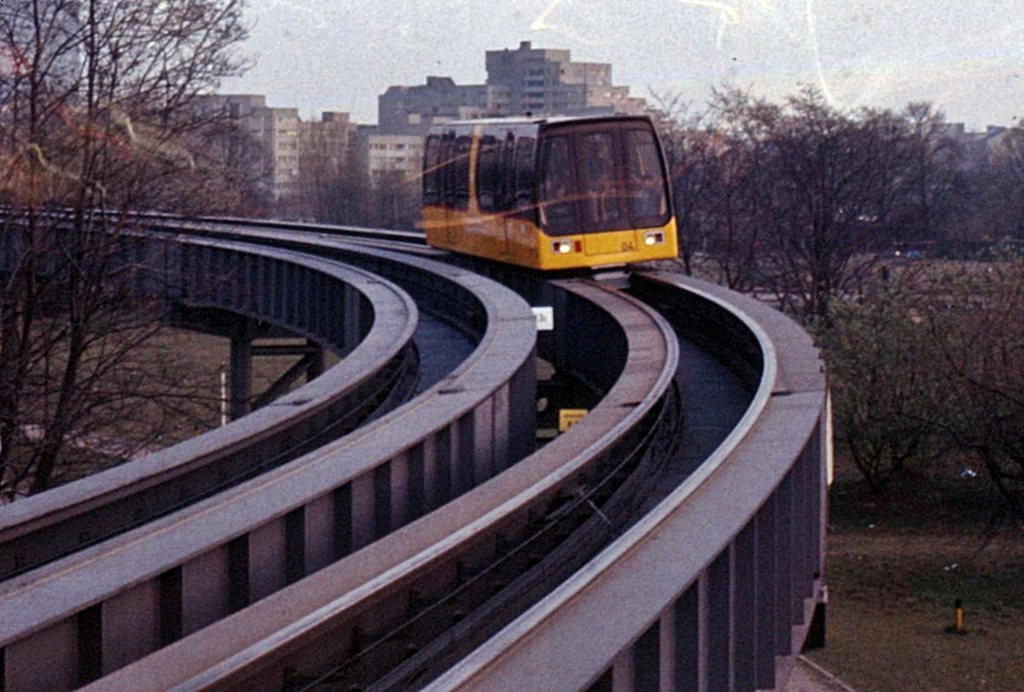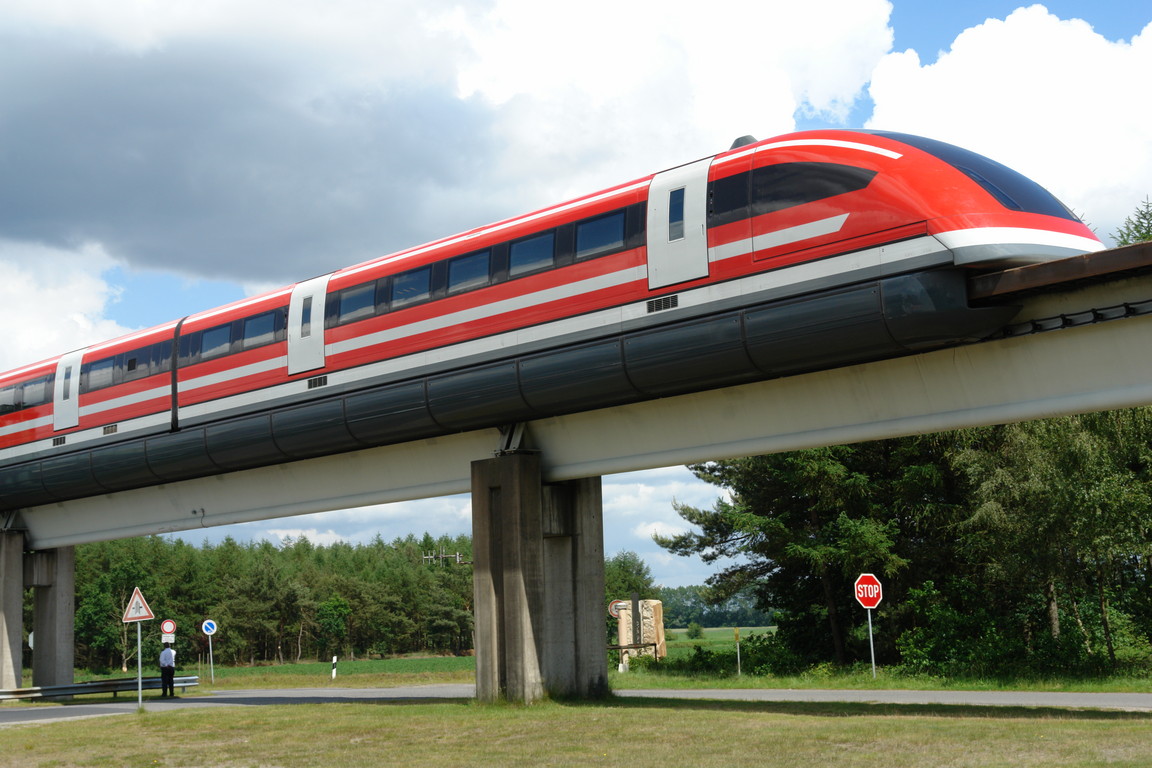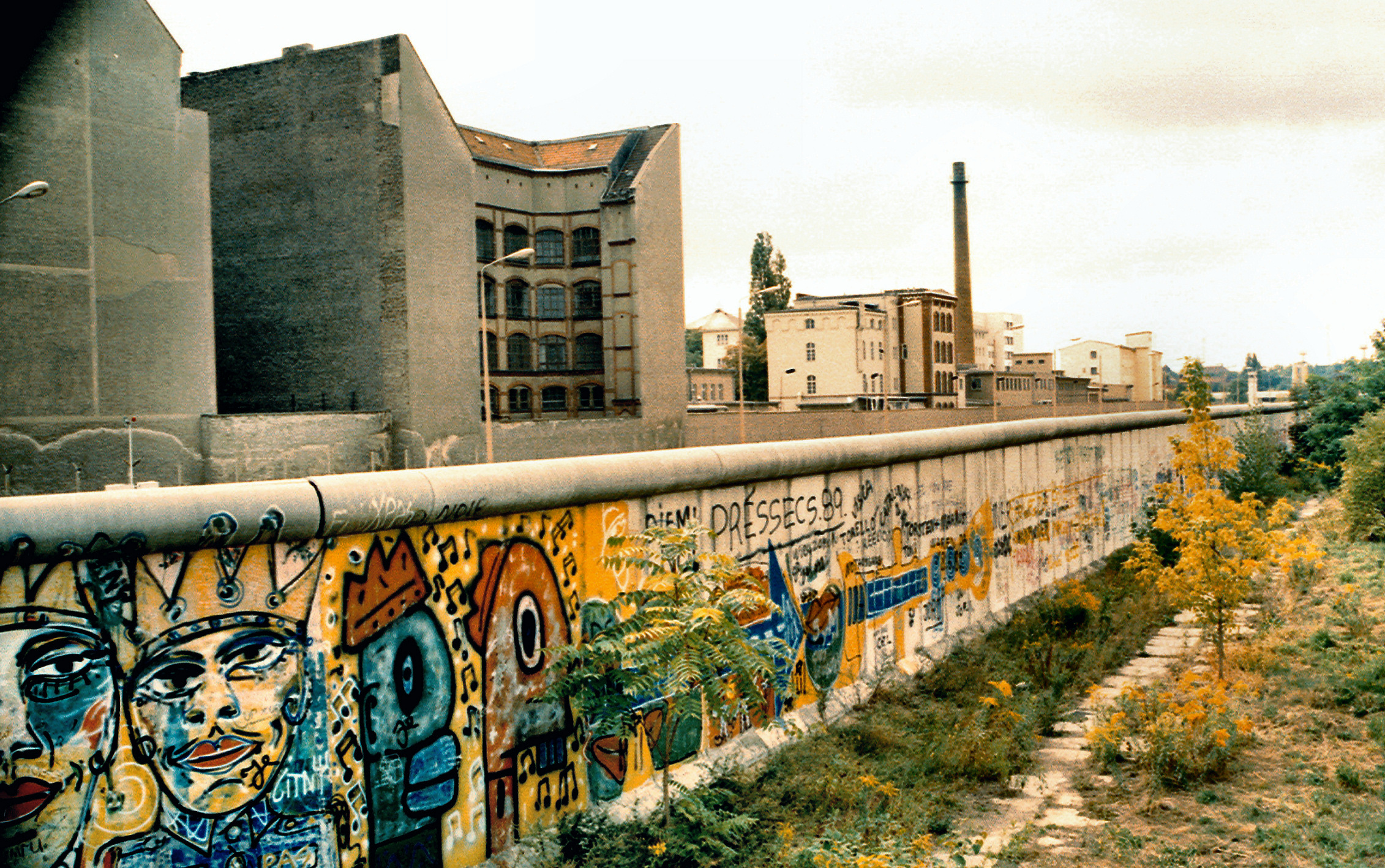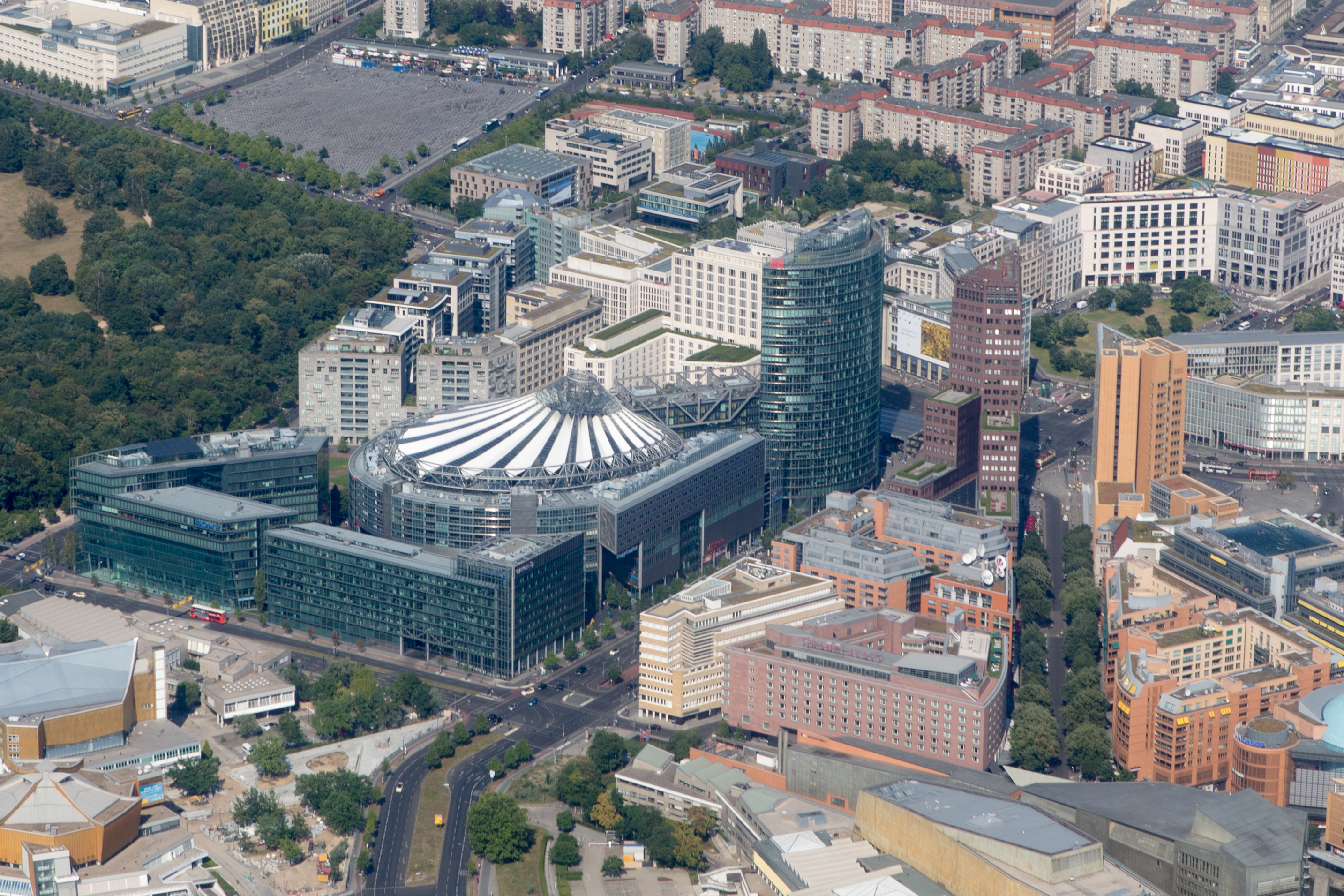|
M-Bahn
The M-Bahn or Magnetbahn was an elevated Maglev train line operating in Berlin, Germany, experimentally from 1984 and in passenger operation from 1989 to 1991. The line was in length, and featured three stations, two of which were newly constructed. Presumed to be the future of rail transit in Berlin, the line was built to fill a gap in the West Berlin public transport network created by the construction of the Berlin Wall. It was rendered redundant by the reunification of Berlin and was closed to enable reconstruction of the U2 line. The M-Bahn was the second Maglev line to open to public traffic, after the Birmingham Maglev but before the Shanghai maglev train. Construction and running were undertaken by Magnetbahn GmbH. History The first section of the Berlin U-Bahn to be built included an elevated section between Gleisdreieck and Potsdamer Platz stations. After the partition of Berlin, Gleisdreieck station was in West Berlin whilst Potsdamer Platz station was direct ... [...More Info...] [...Related Items...] OR: [Wikipedia] [Google] [Baidu] |
U2 (Berlin U-Bahn)
U2 is a line of the Berlin U-Bahn. The U2 line starts at Pankow S-Bahn station, runs through the eastern city centre (Alexanderplatz) to Potsdamer Platz, the western city centre (Wittenbergplatz, Zoologischer Garten, Theodor-Heuss Platz) and finally to the Ruhleben terminal station. The U2 has 29 stations and a length of . Together with the U1, U3, and U4 lines, it was part of the early Berlin U-Bahn network built before 1914. The line between Potsdamer Platz and Zoologischer Garten was the western section of the "stem line" (''Stammstrecke''), Berlin's first U-Bahn line opened in 1902. Overview The line starts to the west of central Berlin at Ruhleben and runs on an embankment between Rominter Allee and the railway to Spandau (also called the "Olympic" or "Grunewald" railway). On the bend approaching Olympischen Straße, the line descends into tunnel to run beneath that road from Neu-Westend to Wittenbergplatz. Subsequently, the U2 swings onto Reichsstrasse to Theodor-Heuss-P ... [...More Info...] [...Related Items...] OR: [Wikipedia] [Google] [Baidu] |
Magnetic Levitation Train
Maglev (derived from ''magnetic levitation''), is a system of train transportation that uses two sets of electromagnets: one set to repel and push the train up off the track, and another set to move the elevated train ahead, taking advantage of the lack of friction. Such trains rise approximately off the track. There are both high speed, intercity maglev systems (over ), and low speed, urban maglev systems ( to ) being built and under construction and development. With maglev technology, the train travels along a guideway of electromagnets which control the train's stability and speed. While the propulsion and levitation require no moving parts, the bogies can move in relation to the main body of the vehicle and some technologies require support by retractable wheels at low speeds under . This compares with electric multiple units that may have several dozen parts per bogie. Maglev trains can therefore in some cases be quieter and smoother than conventional trains and have ... [...More Info...] [...Related Items...] OR: [Wikipedia] [Google] [Baidu] |
Maglev
Maglev (derived from '' magnetic levitation''), is a system of train transportation that uses two sets of electromagnets: one set to repel and push the train up off the track, and another set to move the elevated train ahead, taking advantage of the lack of friction. Such trains rise approximately off the track. There are both high speed, intercity maglev systems (over ), and low speed, urban maglev systems ( to ) being built and under construction and development. With maglev technology, the train travels along a guideway of electromagnets which control the train's stability and speed. While the propulsion and levitation require no moving parts, the bogies can move in relation to the main body of the vehicle and some technologies require support by retractable wheels at low speeds under . This compares with electric multiple units that may have several dozen parts per bogie. Maglev trains can therefore in some cases be quieter and smoother than conventional trains and have ... [...More Info...] [...Related Items...] OR: [Wikipedia] [Google] [Baidu] |
Berlin Potsdamer Platz Station
Berlin Potsdamer Platz is a railway station in Berlin. It is completely underground and situated under Potsdamer Platz in central Berlin. Regional and S-Bahn services call at the station, and it is also served by U-Bahn line U2. History S-Bahn The first station at Potsdamer Platz was the Potsdamer Bahnhof terminus, which was closed on 27 September 1945 due to war damage. In 1939 the S-Bahn, or ''Stadtbahn'' (City Railway), arrived. The idea for a North-South Link rapid transit rail line from Unter den Linden to Yorckstraße, via Potsdamer Platz and Anhalter Bahnhof, had first been mooted in 1914, but it was not planned in detail until 1928, and then approval had to wait until 1933. Begun in 1934, it was plagued with disasters. Determination to have it finished in time for the Berlin Olympic Games in 1936 meant vital safety measures were ignored: on 20 August 1935, a tunnel collapse just south of the Brandenburg Gate buried 23 workmen of whom only four survived; th ... [...More Info...] [...Related Items...] OR: [Wikipedia] [Google] [Baidu] |
Mendelssohn-Bartholdy-Park (Berlin U-Bahn)
Mendelssohn-Bartholdy-Park is a Berlin U-Bahn station on line U2, located in the Tiergarten district at the border with Kreuzberg. Opened in 1998, the station is named after a small park east of the building, itself named in honor of the composer Felix Mendelssohn Bartholdy, commonly known as Felix Mendelssohn. Though it is one of the newest stations on the U-Bahn, it is located on the first ''Stammstrecke'' line of 1902, where its northern branch crosses the Landwehr Canal on a viaduct and passes north through part of the Scandic Hotel before heading underground towards Potsdamer Platz. With the building of the Berlin Wall on 13 August 1961, train service was interrupted, and for a brief time in 1991 the tracks served for the experimental M-Bahn maglev line, stopping at ''Bernburger Straße'' station slightly to the north. Following reunification A political union is a type of political entity which is composed of, or created from, smaller polities, or the process whi ... [...More Info...] [...Related Items...] OR: [Wikipedia] [Google] [Baidu] |
Berlin U-Bahn
The Berlin U-Bahn (; short for , "underground railway") is a rapid transit system in Berlin, the capital and largest city of Germany, and a major part of the city's public transport system. Together with the S-Bahn, a network of suburban train lines, and a tram network that operates mostly in the eastern parts of the city, it serves as the main means of transport in the capital. Opened in 1902, the serves 175 stations spread across nine lines, with a total track length of , about 80% of which is underground. Trains run every two to five minutes during peak hours, every five minutes for the rest of the day and every ten minutes in the evening. Over the course of a year, U-Bahn trains travel , and carry over 400 million passengers. In 2017, 553.1 million passengers rode the U-Bahn. The entire system is maintained and operated by the , commonly known as the BVG. Designed to alleviate traffic flowing into and out of central Berlin, the U-Bahn was rapidly expanded until the city ... [...More Info...] [...Related Items...] OR: [Wikipedia] [Google] [Baidu] |
Wings Of Desire
''Wings of Desire'' (, ; ) is a 1987 romantic fantasy film written by Wim Wenders, Peter Handke and Richard Reitinger, and directed by Wenders. The film is about invisible, immortal angels who populate Berlin and listen to the thoughts of its human inhabitants, comforting the distressed. Even though the city is densely populated, many of the people are isolated or estranged from their loved ones. One of the angels, played by Bruno Ganz, falls in love with a beautiful, lonely trapeze artist, played by Solveig Dommartin. The angel chooses to become mortal so that he can experience human sensory pleasures, ranging from enjoying food to touching a loved one, and so that he can discover human love with the trapeze artist. Inspired by art depicting angels visible around West Berlin, at the time encircled by the Berlin Wall, Wenders and author Peter Handke conceived of the story and continued to develop the screenplay throughout the French and German co-production. The film was shot ... [...More Info...] [...Related Items...] OR: [Wikipedia] [Google] [Baidu] |
Gleisdreieck (Berlin U-Bahn)
Gleisdreieck is an elevated Berlin U-Bahn station located on a viaduct in the Kreuzberg district, and served by lines U1, U2, and U3. The U1/ U3 platform is at a higher level than, and perpendicular to, that of the U2. Overview ''Gleisdreieck'' before and after the reconstruction The station's name literally means "railway triangle," or wye in English, and marks the spot of an earlier major train hub that opened in 1902, where the three branches of the first ''Stammstrecke'' U-Bahn line from Zoologischer Garten, Potsdamer Platz and Warschauer Brücke met. A major accident at the triangle happened on 26 September 1908, when two trains collided. One car derailed and fell from the viaduct, killing 18 people and injuring 21. Upon another dangerous incident, the single-level triangle from 1912 was rebuilt and replaced by the current two-level station. Since then there is no direct rail connection between the two lines at Gleisdreieck, but only an intersection. In 1939 the N ... [...More Info...] [...Related Items...] OR: [Wikipedia] [Google] [Baidu] |
Linear Motor
A linear motor is an electric motor that has had its stator and rotor "unrolled", thus, instead of producing a torque ( rotation), it produces a linear force along its length. However, linear motors are not necessarily straight. Characteristically, a linear motor's active section has ends, whereas more conventional motors are arranged as a continuous loop. A typical mode of operation is as a Lorentz-type actuator, in which the applied force is linearly proportional to the current and the magnetic field (\vec F = I \vec L \times \vec B). Linear motors are by far most commonly found in high accuracy engineering applications. It is a thriving field of applied research with dedicated scientific conferences and engineering text books. Many designs have been put forward for linear motors, falling into two major categories, low-acceleration and high-acceleration linear motors. Low-acceleration linear motors are suitable for maglev trains and other ground-based transportation app ... [...More Info...] [...Related Items...] OR: [Wikipedia] [Google] [Baidu] |
Potsdamer Platz
Potsdamer Platz (, ''Potsdam Square'') is a public square and traffic intersection in the center of Berlin, Germany, lying about south of the Brandenburg Gate and the Reichstag ( German Parliament Building), and close to the southeast corner of the Tiergarten park. It is named after the city of Potsdam, some to the south west, and marks the point where the old road from Potsdam passed through the city wall of Berlin at the Potsdam Gate. After developing within the space of little over a century from an intersection of rural thoroughfares into the most bustling traffic intersection in Europe,Weitz, Eric D. ''Weimar Germany'', 2007, Princeton University Press, , page 43 it was totally destroyed during World War II and then left desolate during the Cold War era when the Berlin Wall bisected its former location. Since German reunification, Potsdamer Platz has been the site of major redevelopment projects. Historical background The history of Potsdamer Platz can be traced ... [...More Info...] [...Related Items...] OR: [Wikipedia] [Google] [Baidu] |





.jpg)


